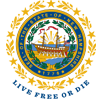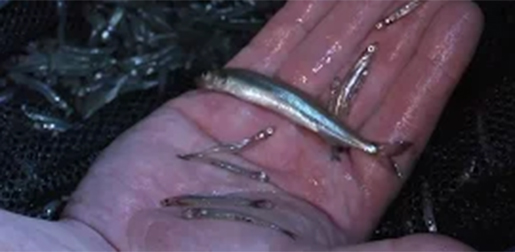Large Lake Fisheries in NH
Improving Large Lake Fish Habitat
New Hampshire’s centrally located "Large Lakes" span from Vermont to Maine borders, exceeding 72,000 surface acres. These diverse lakes -- including Winnipesaukee, Winnisquam, Squam, Newfound, Sunapee, Ossipee, Wentworth, Conway, and Merrymeeting - typically offer both coldwater (e.g., trout, salmon) and warm water (e.g. bass, pickerel, perch) fisheries. Most are stocked annually with landlocked salmon and rainbow trout; all other species present are sustained through natural reproduction. Given the abundance of cold, deepwater habitats, these lakes contain rainbow smelt, the most important pelagic (open-water) forage (bait) species for New Hampshire's coldwater gamefish. Landlocked salmon, lake trout, and rainbow trout are dependent upon healthy smelt populations to achieve maximum growth rates and body condition (robustness). Lake trout, and particularly rainbow trout, will also consume a wide variety of other prey items available. Rainbow smelt are also important prey for many other species popular with anglers, including smallmouth bass and white perch.
A major goal of the Large-Lakes Fisheries Program is to provide quality recreational angling opportunities for landlocked salmon, lake trout, and/or rainbow trout by maintaining adequate rainbow smelt populations. Smelt populations are monitored annually via nighttime hydro-acoustic (sonar) and trawl net surveys on select lakes. Smelt densities are evaluated to assist in setting salmon stocking rates, in order to allow maximum growth while maintaining adequate smelt populations. Although many factors ultimately affect smelt populations, their abundance can be critically reduced by overstocking salmon.
Annual fall netting surveys are conducted on select lakes to assess landlocked salmon, lake trout, and/or rainbow trout population dynamics, including age, growth, and body condition (robustness). Several-hundred landlocked salmon are also trapped and held for annual egg collection efforts, to perpetuate the statewide stocking program. "Salmon Sunday," a popular event held each November at Pope Dam in Tuftonboro, provides the public with an opportunity to observe landlocked salmon egg collection (stripping) efforts in an "up close and personal" manner.
Annual young-of-the-year (YOY) smallmouth and largemouth bass electrofishing surveys, recently commenced in Lake Winnipesaukee, monitor annual reproductive success and help forecast future year-class strength - a major factor influencing bass fisheries.
All fish species - from the grandest gamefish to the tiniest forage (bait) fish - are inherently and indelibly interconnected with the aquatic ecosystem. In partnerships with the angling community, lake associations, other state agencies, municipalities, and private landowners, the Inland Fisheries Division strives to maintain and/or enhance cold and warm-water fisheries in New Hampshire’s "Large Lakes."




